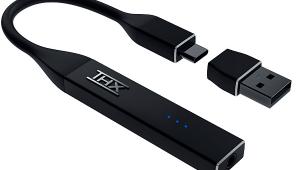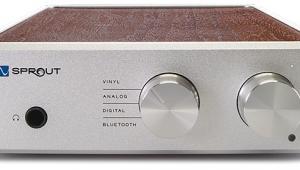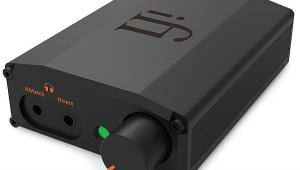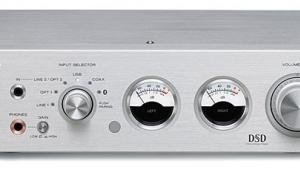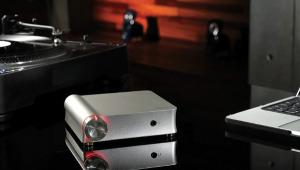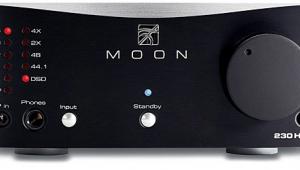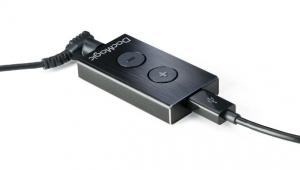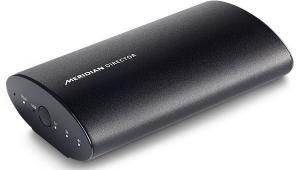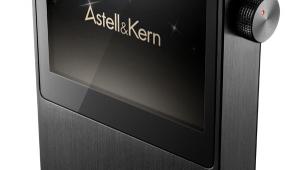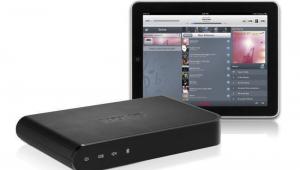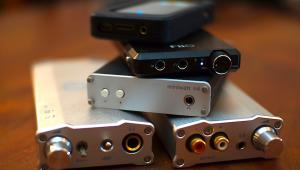PS Audio Sprout and Teac AI-301DA Integrated AmpDACs Review
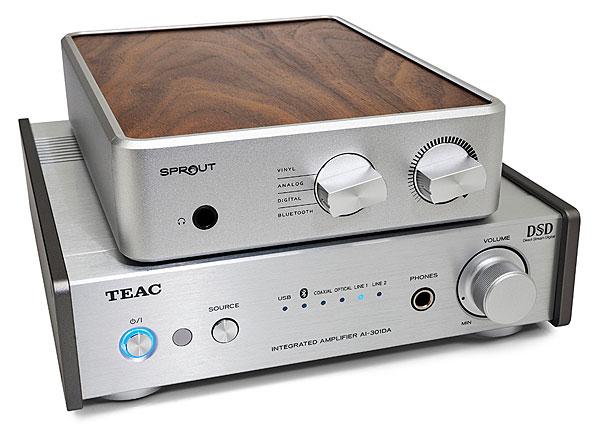
AT A GLANCE: PS Audio
Plus
Phono input
Line input and output
Warm, engaging sound
Minus
No remote control
No direct DSD decoding
AT A GLANCE: Teac
Plus
Six source inputs
Dedicated sub output
Remote control
Dynamic and transparent
Minus
No stereo line out
THE VERDICT
These compact, versatile, and affordable combos will drive good bookshelf speakers or headphones to audiophile heights, each with its own sense of style.
It’s certainly a thing. It may be a trend. Or possibly even a wave—a new-wave, high-res groundswell sweeping over the nation’s small but growing (we hope!) cadre of youthful audio fans.
I’m talking about ultra-compact integrated-amplifier/digital-to-analog converters: “ampDACs,” I’m calling them. The newly evolved species combines a two-channel integrated amplifier (usually of modest power), a headphone output (usually), and high-resolution audio digital-to-analog conversion, all engineered to meet audiophile expectations of quality, and all packaged into a single, paperback-sized unit conceived for versatility. (Most models, including the two under review here, add today’s ubiquitous Bluetooth wireless capability.)
Desktop audio, dorm-room sound system, home-studio reference playback, secondary-room music system: All are target-market segments for the ampDAC. You can already find examples on the shelves, ranging from truly popular-priced models under a couple of bills to multi-thousand-dollar ones that will make your head swim. But either way, nearly all will have designs, features, and marketing that clearly nod at the coming-up generation of younger music lovers. Ever seeking the happy medium in cost, S&V rounded up two freshly debuted ampDACs from among the more rationally priced.
PS Audio is a small Colorado outfit with a 40-year portfolio of audiophile designs, mostly encompassing pre- and power amps and DACs. Their new ampDAC, whimsically dubbed Sprout and priced well below usual PS Audio territory, is manufactured in China rather than Boulder, from whence most full-sized PS components spring. What’s more, the Sprout’s creation was crowd-funded via Kickstarter, and you can’t get much more next-gen trendy than that.
Teac may be unfamiliar to more recently minted audio-istas, but the name—or that of Tascam, Teac’s pro-audio brand—should be an old friend to anyone involved in music or recording since the 1970s, when Teac was a leader in open-reel analog-tape recorders, and then cassette units. The AI-301DA is one of a quite broad range of hi-res-audio-ready components in the firm’s new lineup of 21st-century midsize gear. (For more about hi-res audio, or HRA, see our feature on page 36.)
Compare and Contrast
These new ampDACs from PS Audio and Teac have much in common, and a few differences, too. Both incorporate two-channel power, 192-kilohertz/24-bit-friendly asynchronous USB DACs, and 0.25-inch headphone outputs, and they feature only very basic control sets: power on/off, volume, and input select. Both also have Bluetooth with the higher-sound-quality aptX codec, and they squeeze in nicer-grade multi-way-post speaker outputs instead of cheapos or (shudder!) spring terminals.
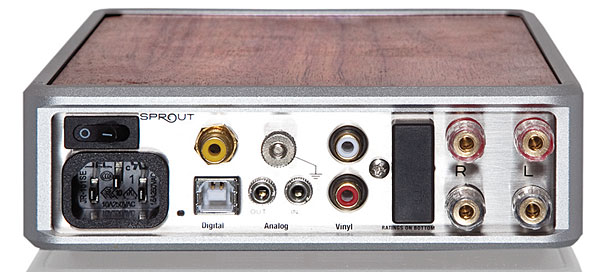
Differences: PS Audio’s Sprout features a phonograph input (feeding a high-quality onboard phono preamp) but only a single analog-stereo line in, plus an analog preout, both on 1/8-inch stereo jacks. Teac’s AI-301DA offers two line-ins on dual RCA jacks but no line/preamp outputs, and no turntable input—you’d need a separate phono preamp for that. It does sport an RCA sub output, however, making it ready for a 2.1-channel setup. (Adding a sub to the Sprout calls for tapping the analog preout.)

The Teac includes three selectable wired digital inputs (coax, optical, and USB), while the PS Audio’s coaxial-digital and USB inputs are fixed to the same path; USB automatically takes precedence should both become simultaneously “live.”
Geekier Still
I played DSD music files through both ampDACs, but each unit handled them differently. Technically speaking, the Teac’s Burr-Brown PCM1795 DAC can directly decode a DSD signal; the Sprout’s Wolfson WM8524 chip only does PCM. However, the USB output of today’s Macintosh computers supports just one audio format, which is PCM. For purpose of transporting any DSD file from a Mac server (such as my own), there’s an industry standard protocol called DSD-over-PCM (DoP) that will package the DSD bits in PCM frames. If you play a DSD file, DoP inserts flags in the bitstream to tell the DAC on the receiving end it’s really sending DSD in PCM clothing, and if the DAC can handle DSD directly, it gets decoded as such. If not, the file will have to be converted to PCM for playback. (Windows servers, incidentally, can send DSD files via USB as raw data instead of PCM; drivers help facilitate that.)
The Sprout, then, can’t play a DSD bitstream directly, requiring a software player that performs a DSD-to-PCM conversion on the fly. Most players today, including those I used here, negotiate this automatically. Teac, meanwhile, confirmed that the AI-301DA was also receiving DSD as PCM from the server via DoP— but clarified that these files were then decoded from DSD to analog. The audibility of DSD-to-PCM versus DSD-direct is a controversial subject, no doubt, but in any event, I certainly heard nothing I could remotely ascribe to the Sprout’s “non-native” DSD playback among the files I tried.
Even more geek: Both designs employ Class D power amplifier blocks (often erroneously labeled “digital amplifiers”). Teac lists theirs as coming from Danish B&O spinoff ICEpower; PS Audio doesn’t call theirs out, but a little poking around inside revealed it to be from a smaller Swedish competitor, Anaview. The specs for both modules are similar: 35-ish watts per channel into 8 ohms, with a bit more into 4 ohms. (See our Test Bench results.) I’m not going to rehash the whole Class D versus Class A/B debate here, except to state that I don’t buy into any amplifier topology being somehow inherently superior; that I’ve heard plenty of fabulous Class D designs of various sizes; and that the size of these ampDACs virtually dictates Class D’s efficiency and compactness.
Last and probably more significant for many, the Teac features a handset remote control, while the PS Audio operates only via fingers to front panel. The Sprout’s designer pointedly states that this was a conscious choice, mandating a more intimate, hands-on, old-school listening experience.
Setup
In my hands, both units felt satisfyingly well made. Each has a certain lapidary quality, with the brushed-aluminum panels and inset Allen-head fasteners that are de rigueur to current high-end industrial design, as well as rotary controls that are luxurious to the touch. The Teac’s ribbed aluminum top panel looked classy to me, the PS Audio’s real wood walnut veneer top more unusual. Both are deluxe-feeling designs, and I wouldn’t consider myself cheated were I to purchase either. But the sound is the thing here, which opens the high-resolution source question.
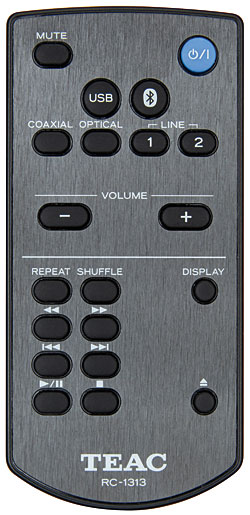 You can, of course, play two-channel SACDs (or even plain CDs) via either component’s S/PDIF digital inputs, and obtain very fine results. I did, and did. But the full-monty test will be hi-res files incoming to the ampDACs’ asynchronous USB ports, which addresses the vexing question of digital-data timing and synchronicity by exercising command and control over data delivery from the source. Here, there’s an ever-increasing list of options to play back these files, including portables/handhelds, music-server/streamer components, and even multiroom wireless systems, but I used what I suspect most folks still do: a computer.
You can, of course, play two-channel SACDs (or even plain CDs) via either component’s S/PDIF digital inputs, and obtain very fine results. I did, and did. But the full-monty test will be hi-res files incoming to the ampDACs’ asynchronous USB ports, which addresses the vexing question of digital-data timing and synchronicity by exercising command and control over data delivery from the source. Here, there’s an ever-increasing list of options to play back these files, including portables/handhelds, music-server/streamer components, and even multiroom wireless systems, but I used what I suspect most folks still do: a computer.
In this case, I connected one of my older iMac’s USB ports directly to the Teac and PS Audio in turn, via a 16-foot USB cable (from Staples, in case anybody cares—and I’m sure somebody will). Each ampDAC drove my usual monitors, old-but-excellent Energy Veritas three-ways, full-range, via 8-foot lengths of specialty 10-gauge speaker wire. The Energys make quite a stout test of amplifier abilities, since they are both a fairly complex load and less than usually sensitive. (Wonk note—probably not the last: While both ampDACs worked perfectly from my Mac, Windows users will need to download and install a driver for the USB connection; both PS Audio and Teac provide links and instructions for this simple but totally unnecessary-in-the-Mac-world detour.) I employed a variety of software-file players, including Korg’s AudioGate, interesting newbie Vox, and Teac’s own freeware HR Audio Player.
Performance
In the reverse of “burying the lede,” I’m going to begin with conclusions, right here at the top of the “Performance” section. Do these two ampDACs sound “different”? Yes, maybe, and no.
Catch Rob Sabin's video tour of the PS Audio Sprout and Teac AI-301DA here.
- Log in or register to post comments

